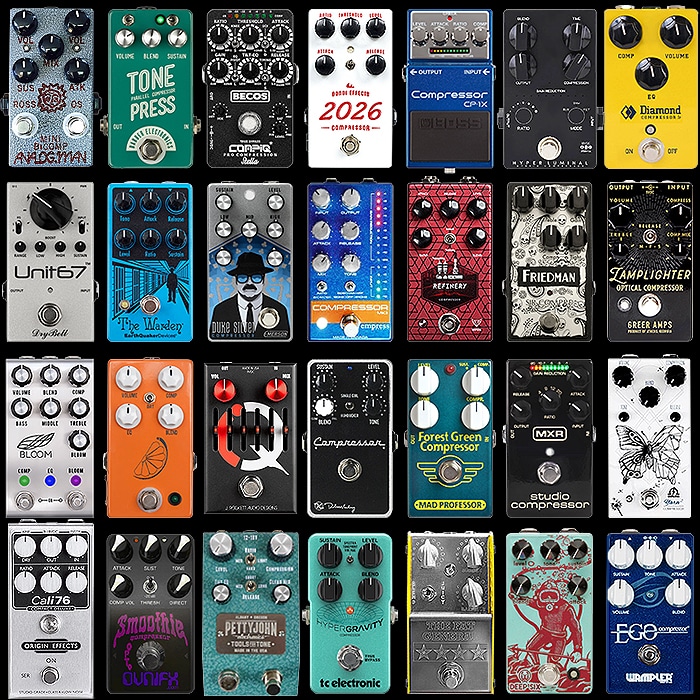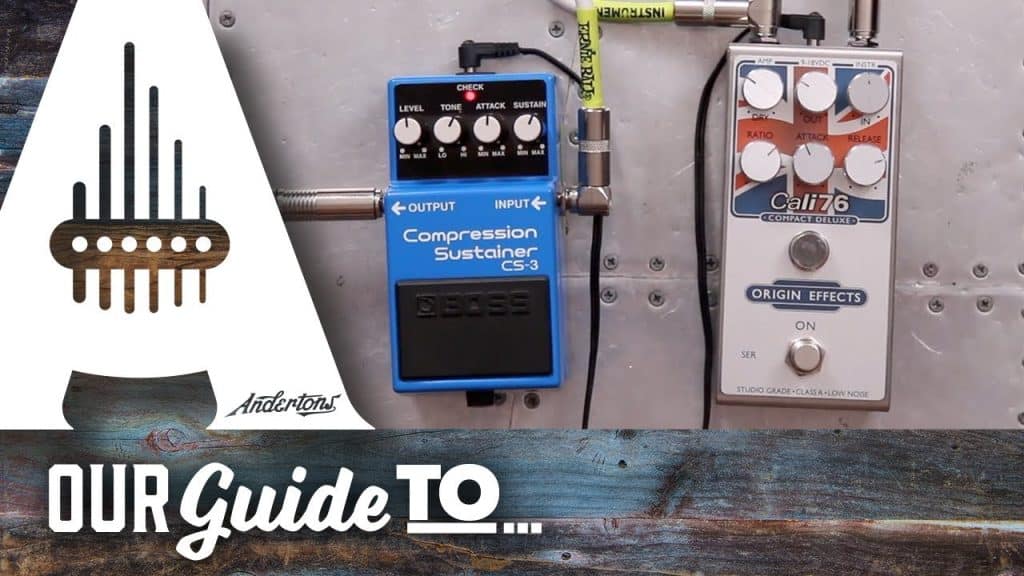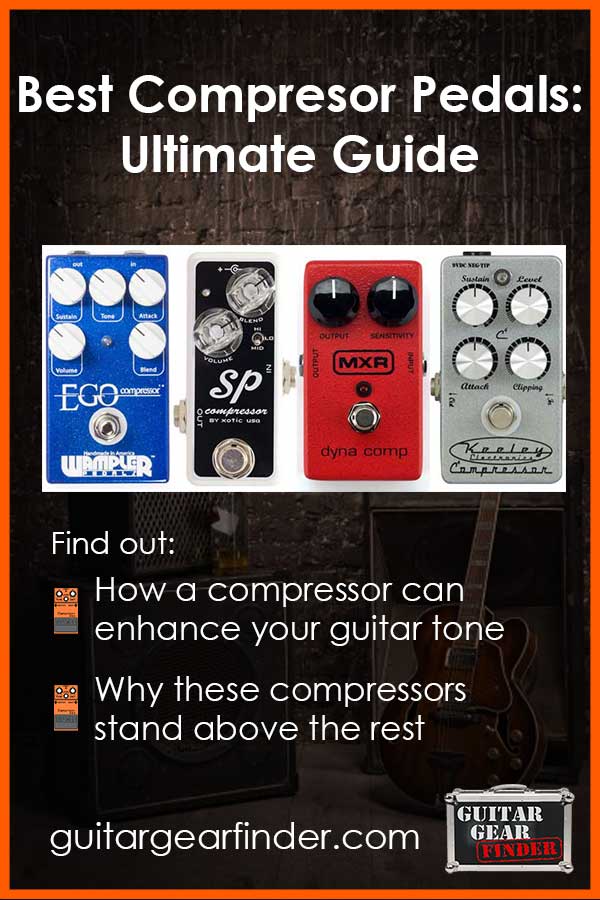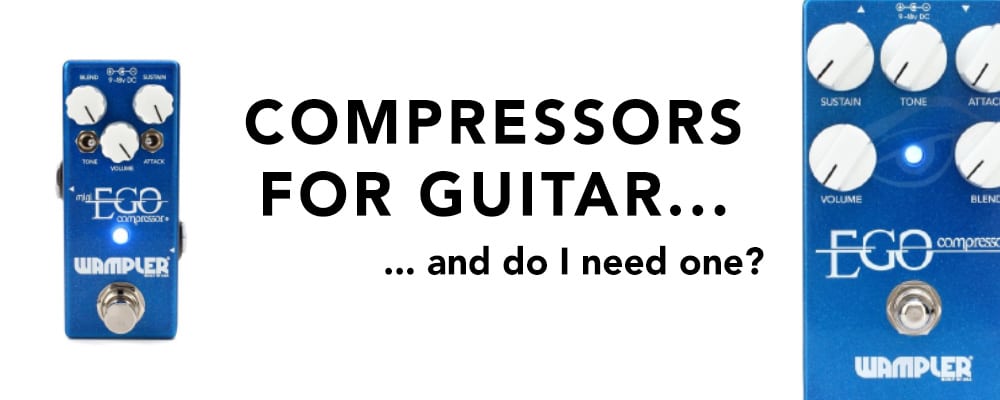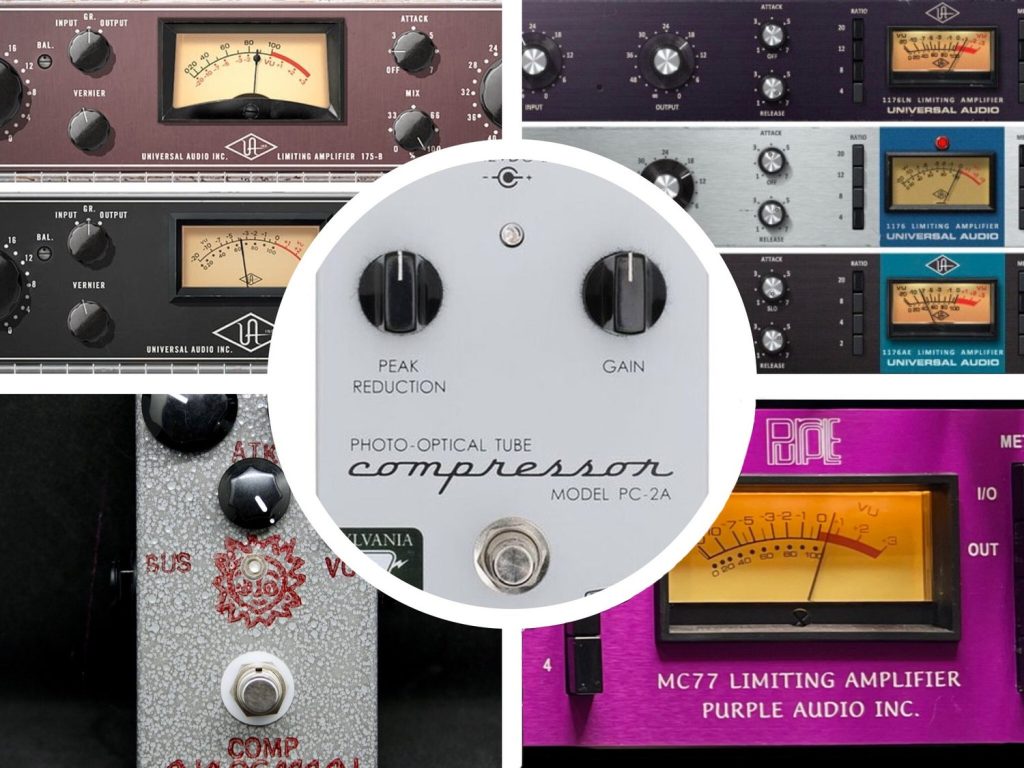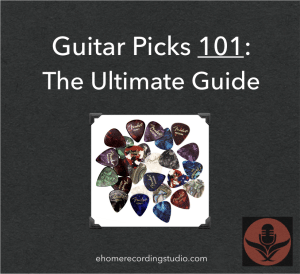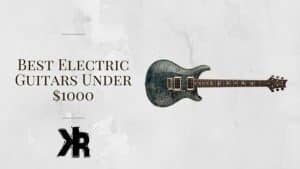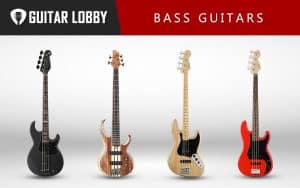If you’re a guitar player looking to enhance your tone and control the dynamics of your playing, then this article is for you. In this ultimate guide, you will discover the key factors to consider when choosing the best guitar compressor. From understanding the different types of compressors to evaluating your personal preferences and musical style, we’ll provide you with the knowledge you need to make an informed decision. By the end of this article, you’ll be well-equipped to find the perfect guitar compressor that suits your needs and takes your playing to the next level.
What is a Guitar Compressor
Definition
A guitar compressor is a pedal or effect device that helps control the dynamic range of the guitar signal. It works by reducing the volume of louder parts of the signal and increasing the volume of softer parts, resulting in a more consistent and balanced sound.
Function
The main function of a guitar compressor is to even out the volume levels of your guitar playing. It smoothens out the peaks and spikes in your sound, allowing you to have better control over the dynamics of your playing. It also enhances sustain, making your notes ring out longer and sound more pleasing to the ears.
Importance
A guitar compressor is a vital tool for any guitarist, whether you’re a beginner or a seasoned professional. It helps improve the overall sound quality by ensuring that your playing is consistent and well-balanced. Moreover, it can be a useful tool for achieving various musical styles and genres, as it can add sustain and create unique tonal effects.
Understanding Guitar Compression
How Compression Works
Compression works by using a combination of threshold, ratio, attack, and release settings to automatically reduce the volume of the guitar signal when it exceeds a certain level. When the signal surpasses the set threshold, the compressor kicks in and reduces the volume by the chosen ratio. The attack and release parameters determine how quickly the compressor engages and disengages, affecting the overall envelope of the sound.
Types of Compression
There are several different types of compression, each with its own unique characteristics and sonic qualities. Some common types include:
- Analog Compressors: These models provide a warm and natural compression sound. They often feature knobs for controlling basic compression parameters, allowing for easy customization.
- Digital Compressors: Digital compressors offer precise control and versatility. They typically come with a wide range of compression algorithms and settings, making them a popular choice for studio recording.
- Optical Compressors: Optical compressors use a light source and a photoelectric cell to control the compression. They are known for their smooth and transparent compression effect.
- VCA Compressors: Voltage-controlled amplifiers (VCA) compressors are commonly used in professional audio applications. They offer fast response times and can handle high signal levels.
- FET Compressors: Field-effect transistor (FET) compressors deliver a lively and colorful compression effect. They are often favored by guitarists for their ability to add character and warmth to the sound.
- Tube Compressors: Tube compressors utilize vacuum tubes to compress the signal, resulting in a warm and vintage-inspired sound. They are sought after for their smooth and musical compression characteristics.
Common Compression Controls
When choosing a guitar compressor, it’s essential to understand the various controls that are commonly found on these devices. These controls allow you to fine-tune the compression effect according to your preferences. Some common compression controls include:
- Input/Output Gain: These controls adjust the overall volume of the input and output signals. They can be used to compensate for any boost or attenuation caused by the compression.
- Ratio: The ratio control determines the amount of compression applied to the signal. Higher ratios, such as 8:1 or 10:1, result in more pronounced compression, while lower ratios, such as 2:1 or 4:1, provide gentler compression.
- Threshold: The threshold control sets the point at which the compression starts to kick in. By adjusting the threshold, you can determine the loudness level at which the compressor engages.
- Attack: The attack control determines how quickly the compression engages after the signal surpasses the threshold. A faster attack time can result in more pronounced compression, while a slower attack time may provide a more transparent effect.
- Release: The release control determines how quickly the compression disengages after the signal falls below the threshold. A shorter release time can result in a more noticeable pumping effect, while a longer release time may provide smoother compression.
- Knee: The knee control determines the shape of the compression curve. A soft knee setting results in a gradual onset of compression, while a hard knee setting provides a more abrupt transition.
- Make-Up Gain: The make-up gain control allows you to adjust the level of the compressed signal. It compensates for any volume reduction caused by the compression, ensuring that the overall volume remains consistent.
Factors to Consider Before Buying
Guitar Playing Style
Your guitar playing style plays a crucial role in determining the type of compressor that suits your needs. For example, if you play primarily rhythm guitar and need a compressor to maintain a steady rhythm, a compressor with a fast attack and release time would be ideal. On the other hand, if you’re a lead guitarist looking to enhance sustain and achieve expressive solos, a compressor with a longer release time might be more suitable.
Budget
Budget is an important factor to consider when purchasing a guitar compressor. There are compressors available at various price points, ranging from affordable entry-level options to high-end professional-grade units. It’s essential to determine your budget and find a compressor that offers the features and quality you need within that range.
Level of Experience
Your level of experience as a guitarist can also influence the type of compressor you choose. If you’re a beginner, you may prefer a compressor with simpler controls and intuitive operation. As you gain more experience and knowledge, you might explore more advanced compressors that offer greater flexibility and customization options.
Pedalboard Space
If you have a compact pedalboard setup, it’s crucial to consider the size of the compressor pedal. Some compressors are larger and take up more space, while others are more compact and designed to fit in tight pedalboard configurations. Make sure to assess your available space and choose a compressor that fits your setup without overcrowding it.
Connectivity Options
Different compressors offer various connectivity options, such as mono or stereo inputs and outputs, as well as the ability to connect to other pedals or audio interfaces. Consider your specific needs and ensure that the compressor you choose provides the necessary connectivity options for your setup.
Power Supply
Lastly, determine the power supply requirements of the compressor. Some compressors run on batteries, while others require an external power supply or can be powered through a pedalboard power source. Take into account your preferred method of powering pedals and choose a compressor that aligns with your setup and power preferences.
Different Types of Guitar Compressors
Analog Compressors
Analog compressors are highly regarded for their warm and natural compression sound. They often feature simple yet effective controls that allow for easy customization. Analog compressors are favored by many guitarists for their ability to add character and musicality to the sound.
Digital Compressors
Digital compressors offer precise control and versatility, making them a popular choice for studio recording. They come with a wide range of compression algorithms and settings, allowing you to dial in the desired compression effect with accuracy. Digital compressors are known for their transparency and ability to handle complex audio signals.
Optical Compressors
Optical compressors use a light source and a photoelectric cell to control the compression. They are renowned for their smooth and transparent compression effect. Optical compressors are often favored by guitarists who desire a natural yet tightly controlled compression sound.
VCA Compressors
VCA compressors, short for voltage-controlled amplifiers, are widely used in professional audio applications. They offer fast response times and can handle high signal levels, making them suitable for both live performances and studio recording. VCA compressors are known for their reliability and ability to provide precise control over the compression effect.
FET Compressors
Field-effect transistor (FET) compressors deliver a lively and colorful compression effect. They are highly regarded for their ability to add character and warmth to the sound. FET compressors are often the compressor of choice for guitarists looking to achieve a dynamic and expressive compression sound.
Tube Compressors
Tube compressors utilize vacuum tubes to compress the signal, resulting in a warm and vintage-inspired sound. They are sought after for their smooth and musical compression characteristics. Tube compressors are favored by those who desire a classic and vintage compression sound.
Choosing the Right Compression Ratio
What is Compression Ratio
Compression ratio refers to the extent of volume reduction applied to the input signal when it surpasses the set threshold. It describes the relationship between the input level and the output level of the compressor. For example, a compression ratio of 4:1 means that for every 4 decibels the input signal goes over the threshold, the output signal is reduced by 1 decibel.
Typical Compression Ratios for Guitar
When it comes to guitar compression, there are no strict rules regarding compression ratios. However, certain ratios are commonly used and can serve as a starting point. A compression ratio of 2:1 or 4:1 is often employed for gentle compression that maintains the natural dynamics of the guitar. For a more pronounced compression effect, ratios of 8:1 or higher can be utilized.
Choosing the Compression Ratio
Selecting the right compression ratio depends on your desired effect and the style of music you play. Experimentation is key to finding your preferred compression ratio. Start with a lower ratio and gradually increase it until you achieve the desired level of compression without compromising the natural dynamics and feel of your playing.
Selecting the Threshold Level
Understanding Threshold
The threshold level in a guitar compressor determines the loudness level at which the compression effect kicks in. When the input signal exceeds the threshold, the compressor engages, reducing the volume according to the chosen ratio. Setting the threshold appropriately is crucial to achieve optimal compression without excessive or unwanted volume reduction.
Determining the Optimal Threshold Level
To find the optimal threshold level, start by playing your guitar at different volume levels and adjust the threshold accordingly. Set the threshold just below the loudest parts of your playing that you want to control. Avoid setting the threshold too low, as it can result in excessive compression and an unnatural sound. Regularly monitor your playing and make fine adjustments to the threshold until you find the sweet spot that enhances your sound without sacrificing dynamics.
Evaluating Attack and Release Settings
Overview of Attack and Release
Attack and release settings control how quickly the compressor engages and disengages when the signal exceeds or falls below the threshold. The attack time determines how quickly the compressor reduces the volume, while the release time determines how quickly the compression effect fades away once the signal falls below the threshold.
Effects of Attack and Release on Tone
The attack and release settings can significantly affect the tone and feel of your guitar playing. Faster attack times result in more pronounced compression that can soften the initial attack of your notes, making them sound smoother and more sustained. Slower attack times, on the other hand, preserve the initial attack and provide a more transparent compression effect. Release times affect sustain and the overall envelope of the sound, with shorter release times providing a tighter and more controlled sound, and longer release times offering a more natural and dynamic response.
Finding the Ideal Attack and Release Settings
Finding the ideal attack and release settings is a process of experimentation. Start with moderate attack and release times and play different musical passages to assess the impact on your tone and dynamics. Make small adjustments to the attack and release settings until you achieve the desired compression effect that complements your playing style and musical preferences.
Examining Control Parameters
Input/Output Gain
The input and output gain controls allow you to adjust the overall volume of the input and output signals. Use the input gain to compensate for any boost or attenuation caused by the compression. The output gain helps ensure that the overall volume remains consistent, compensating for any volume reduction caused by the compression.
Ratio
The ratio control determines the amount of compression applied to the signal. Higher ratios result in more pronounced compression, while lower ratios provide gentler compression. Adjust the ratio according to your desired level of compression and the style of music you play.
Threshold
The threshold control sets the point at which the compression effect engages. It determines the loudness level at which the compressor activates. Set the threshold just below the loudest parts of your playing to achieve optimal compression without excessive volume reduction.
Attack
The attack control determines how quickly the compressor engages after the signal surpasses the threshold. A faster attack time can result in more pronounced compression, while a slower attack time may provide a more transparent effect. Experiment with different attack settings to find the optimal response for your playing style.
Release
The release control determines how quickly the compressor disengages after the signal falls below the threshold. A shorter release time can result in a more noticeable pumping effect, while a longer release time may provide smoother compression. Adjust the release setting to achieve the desired sustain and dynamic response.
Knee
The knee control determines the shape of the compression curve. A soft knee setting results in a gradual onset of compression, while a hard knee setting provides a more abrupt transition. Experiment with different knee settings to find the compression curve that suits your playing style and tonal preferences.
Make-Up Gain
The make-up gain control allows you to adjust the level of the compressed signal. It compensates for any volume reduction caused by the compression, ensuring that the overall volume remains consistent. Use the make-up gain to balance the output level and match it to the uncompressed signal or desired volume level.
Considering Additional Features
Blend/Mix Control
Some compressors come with a blend or mix control that allows you to blend the compressed signal with the dry (uncompressed) signal. This feature can be beneficial for maintaining dynamics and preserving the natural feel of your playing while still benefiting from the compression. Adjust the blend control to find the right balance between the compressed and dry signals.
Sidechain
Sidechain functionality enables you to trigger the compressor’s compression effect with an external source, such as a click track or drum beat. This feature can be useful for creating rhythmic pumping effects or achieving precise control over certain elements of your playing. Consider whether sidechain functionality is something you desire in a compressor.
Sustain Enhancement
Some compressors come with a built-in sustain enhancement feature that can add sustain and clarity to your playing. This feature can be particularly useful for lead guitarists who want to achieve expressive and soaring solos. If sustain enhancement is important to you, look for a compressor that specifically offers this feature.
Auto Makeup Gain
Auto makeup gain is a feature that automatically adjusts the output gain of the compressor to compensate for any volume reduction caused by the compression. This can be convenient for maintaining a consistent volume level without the need for manual adjustment. Consider whether having this feature is important to you and your playing needs.
True Bypass
True bypass is a feature found in many guitar compressors that allows the signal to pass through the compressor without any coloration or alteration when the effect is disengaged. This can be useful for maintaining the integrity of your guitar tone when the compression is not needed. If true bypass is a priority for you, ensure that the compressor you choose offers this feature.
Trying Out Different Pedals
Visit Guitar Stores
To truly explore the wide range of guitar compressor pedals available, it’s beneficial to visit guitar stores and try out different models. By physically playing through the pedals, you can get a better sense of their sound, feel, and features. Take your time to experiment with different compressors and make note of the ones that best suit your playing style and tonal preferences.
Testing Pedals
When testing pedals, play a variety of musical passages that are representative of your playing style. Pay attention to how each compressor affects your tone, dynamics, sustain, and overall sound. Take note of any specific features or controls that stand out to you and consider whether they align with your needs and preferences.
Seeking Expert Advice
If you’re unsure about which guitar compressor pedal to choose, it can be helpful to seek advice from experts in the field. Consult with knowledgeable staff at guitar stores or reach out to experienced musicians and sound engineers for recommendations. They can provide valuable insights based on their own experiences and help guide you towards the best guitar compressor for your needs.
In conclusion, selecting the best guitar compressor for your playing style and preferences requires careful consideration of various factors. Understand the different types of compressors available, familiarize yourself with the common compression controls, and explore the effects of different settings on your tone. Take into account your budget, level of experience, and specific requirements. Trying out different pedals and seeking expert advice can also greatly assist in finding the perfect guitar compressor that enhances your sound and takes your playing to new heights.

